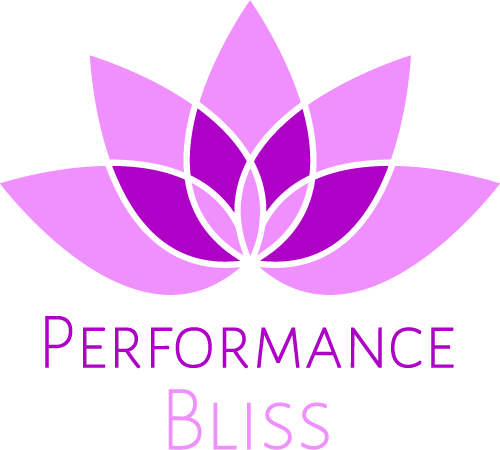Managing a team comes with many responsibilities, one of which is addressing employee performance issues. While occasional dips in performance are expected, ongoing underperformance can affect team productivity and morale. For managers, it’s essential to have a structured approach to support struggling employees and guide them back on track. This is where an effective Performance Improvement Plan (PIP) comes in.
A Performance Improvement Plan is a formal, structured process designed to help employees address performance issues, offering a clear roadmap to improve skills, meet expectations, and regain their footing. When done well, a PIP can not only salvage employee performance but also support long-term development and career growth.
In this article, we’ll provide a step-by-step guide on how managers can create an impactful Performance Improvement Plan that benefits both the employee and the organization, and how tools like Performance Bliss can support this process.
The Purpose of a Performance Improvement Plan
The goal of a Performance Improvement Plan is not to penalize employees but to provide them with the support they need to succeed. A PIP offers employees a structured opportunity to improve their performance, with clear expectations, milestones, and resources. For managers, it’s an essential tool for documenting performance issues, tracking progress, and fostering accountability.
Key objectives of a Performance Improvement Plan include:
- Identifying specific performance gaps and offering actionable steps to address them.
- Providing clear timelines for improvement, with measurable milestones.
- Supporting the employee with feedback, resources, and guidance to improve performance.
- Documenting the process to ensure both the manager and employee have a clear record of the plan.
Performance Bliss, a SaaS platform under development, is designed to help managers streamline the creation and monitoring of PIPs by offering real-time feedback tracking, goal setting, and progress evaluation. By utilizing such tools, managers can ensure that PIPs are implemented effectively and that employees receive the guidance they need.
Step 1: Identify Performance Gaps and Areas for Improvement
The first step in creating an effective Performance Improvement Plan is to clearly identify the specific areas where the employee is underperforming. This requires gathering objective data to ensure the feedback is based on factual performance issues rather than subjective opinions.
Gather Performance Data
Start by reviewing the employee’s performance metrics, past reviews, and feedback from colleagues or supervisors. Look for patterns in the data that indicate ongoing performance gaps. Tools like Performance Bliss can make this process easier by consolidating feedback and performance trends into one accessible platform, giving managers a clear overview of the employee’s track record.
Define the Specific Issues
It’s essential to be precise when identifying performance issues. Vague statements like “you need to improve” aren’t helpful. Instead, pinpoint the exact behaviors or outcomes that need attention. For example, if an employee is consistently missing deadlines, state the frequency and impact of these missed deadlines on the team’s workflow.
Determine the Root Cause
Before moving forward with a PIP, it’s important to understand why the employee is struggling. Are they lacking the necessary skills? Are there external factors affecting their performance, such as personal challenges or unclear expectations? Holding a private conversation to discuss these factors can provide valuable context and help shape the improvement plan.
Step 2: Set Clear, Measurable Goals
A key component of any successful Performance Improvement Plan is setting clear and measurable goals for the employee. These goals should outline what needs to be improved, how progress will be measured, and the timeframe for achieving these improvements.
Define SMART Goals
Each goal should be Specific, Measurable, Achievable, Relevant, and Time-bound (SMART). For example, if the employee struggles with meeting deadlines, a SMART goal might be: “Complete project reports within the agreed deadlines over the next six weeks, with no more than two instances of delay.”
Link Goals to Specific Outcomes
Goals should be linked directly to the outcomes you expect to see. If the employee’s goal is to improve communication skills, for instance, specify how you will evaluate that improvement—whether through feedback from colleagues, observation during meetings, or performance in presentations.
Create a Timeline
Every Performance Improvement Plan needs a realistic timeline for achieving goals. Break down the plan into short-term and long-term milestones. For example, the employee may be expected to demonstrate consistent improvement within the first month, with a full review of their progress after three months.
Performance Bliss supports managers by providing a platform for setting and tracking these goals, ensuring that both the employee and manager can monitor progress easily and make adjustments as needed.
Step 3: Provide the Necessary Resources and Support
Once goals are established, it’s crucial to offer the employee the resources and support they need to achieve them. Without this support, employees may feel overwhelmed or unsure of how to improve.
Offer Training or Mentorship
If the performance gap is related to a lack of skills, provide the employee with access to training programs or mentorship. For instance, if they need to improve technical skills, enroll them in a relevant course or pair them with a more experienced team member who can guide them.
Schedule Regular Check-Ins
A Performance Improvement Plan should include regular check-ins to review the employee’s progress. These meetings allow the manager and employee to discuss challenges, celebrate wins, and adjust the plan as necessary. Regular feedback helps keep the employee motivated and focused on their improvement goals.
Maintain Open Communication
Encourage the employee to ask for help if they encounter difficulties. Make it clear that the PIP is a collaborative process, not a punishment. By fostering a culture of open communication, you increase the likelihood that the employee will engage with the process and succeed.
Performance Bliss allows managers to schedule and track these check-ins, providing a seamless way to document progress and ensure that communication remains consistent throughout the duration of the PIP.
Step 4: Monitor Progress and Provide Continuous Feedback
The success of a Performance Improvement Plan hinges on the ability to monitor progress and provide continuous feedback. Regular feedback helps employees stay on track, understand how they’re progressing, and adjust their efforts if necessary.
Track Progress in Real-Time
Performance improvement is a gradual process, so it’s important to track small wins and improvements along the way. Use performance data and feedback to monitor the employee’s progress against their goals. Performance Bliss provides managers with real-time data on employee performance, making it easy to see how well the employee is meeting their targets.
Give Constructive Feedback
When providing feedback, focus on specific actions and outcomes. Highlight what the employee is doing well and where they still need to improve. Be direct but supportive, reinforcing the idea that the PIP is a tool for growth, not just an evaluation of past mistakes.
Adjust the Plan as Needed
If the employee is making progress but still struggling in certain areas, adjust the goals or timeline accordingly. For example, if an employee shows improvement in communication but still needs more time to develop leadership skills, you might extend the plan or provide additional training.
Step 5: Evaluate the Outcome of the Performance Improvement Plan
At the end of the Performance Improvement Plan timeline, it’s time to evaluate the employee’s progress and determine the next steps. The outcome of the PIP will fall into one of three categories: significant improvement, partial improvement, or no improvement.
Successful Completion of the PIP
If the employee has met or exceeded the goals outlined in the PIP, acknowledge their hard work and discuss how they can continue to develop moving forward. Celebrate their achievements and reinforce their importance to the team.
Partial Improvement
If the employee has made some progress but hasn’t fully met expectations, consider extending the PIP with adjusted goals. This gives the employee more time to work on specific areas while continuing to receive support.
No Improvement
If the employee fails to make any meaningful progress, it may be necessary to explore other options, such as a role reassignment or, in some cases, termination. While this outcome is less desirable, the documentation and structure of the PIP provide a clear record of the efforts made to help the employee succeed.
Performance Bliss can help by providing a complete record of the employee’s progress throughout the PIP, making it easier for managers to evaluate the outcome and take appropriate next steps.
Conclusion: Creating an Effective Performance Improvement Plan
A well-executed Performance Improvement Plan can be a powerful tool for helping struggling employees turn their performance around. By identifying specific issues, setting clear goals, offering support, and providing continuous feedback, managers can guide employees toward meaningful improvement.
Performance Bliss, designed to assist small business managers with teams of 20-50 employees, offers the tools needed to create, track, and monitor PIPs effectively. By leveraging performance data, feedback tracking, and goal management features, managers can ensure that PIPs are not only structured and fair but also supportive of long-term employee development.
With the right approach, a Performance Improvement Plan can transform underperformance into an opportunity for growth and success, benefiting both the employee and the organization as a whole.
👇 Related Reads from Performance Bliss
If you found this helpful, you might also like:
- 🔗 Turning Performance Reviews into a Shared Growth Experience
- 🔗 Turning Feedback Into Action: A Step-by-Step Framework
- 🔗 Performance Reviews for Small Businesses: A Practical Roadmap
- 🔗 How to Make Performance Reviews Memorable and Motivating
- 🔗 How Friendly, Constructive Feedback Builds High-Performing Teams


